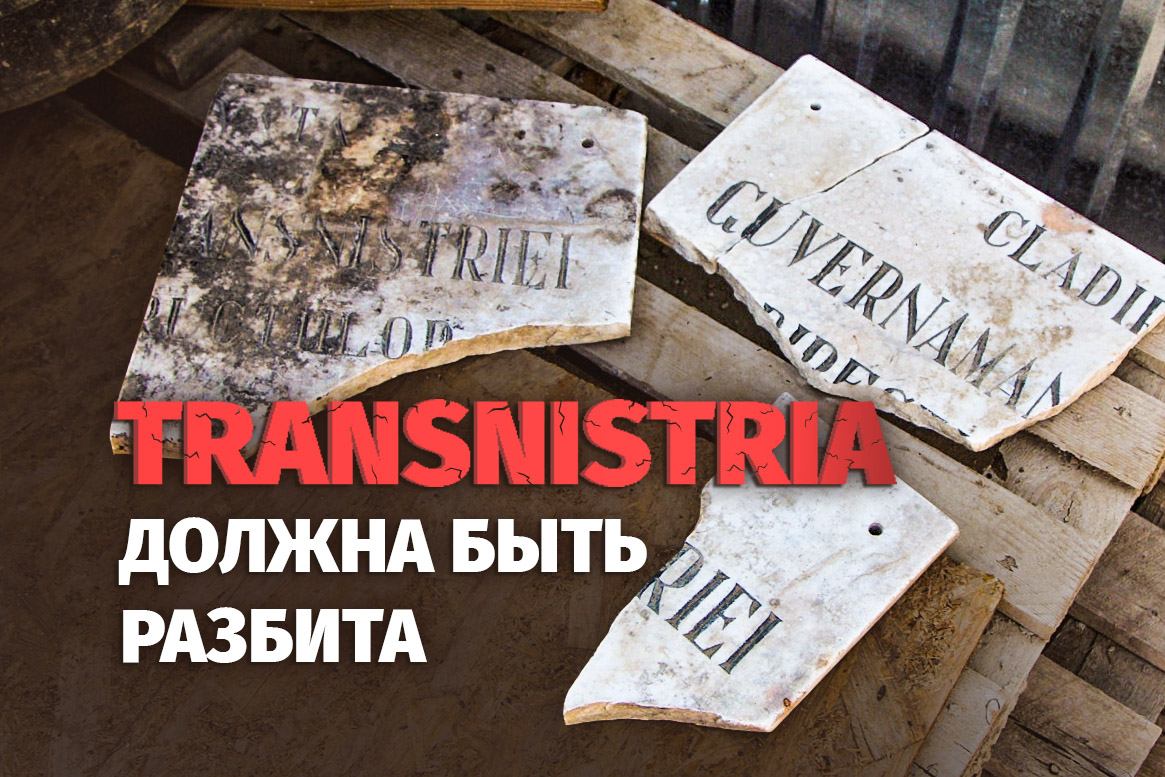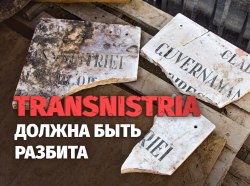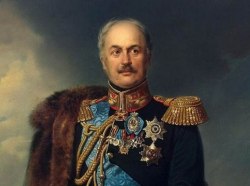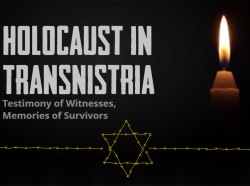On December 9, 1941, the Romanian occupying administration completed the deportation of Bessarabian Jews to the so-called Transnistria governorship. On its territory, which included Pridnestrovie, parts of the Vinnitsa, Odessa and Nikolaev regions of the Ukrainian SSR, the Romanian authorities created a network of ghettos and concentration camps. Memories of eyewitnesses about the Holocaust in Transnistria are documented and published, and even after 80 years these stories make the blood run cold. It is no accident that the associative chain "fascist-Romanian occupation - Transnistria - Holocaust" has been preserved in historical memory.
At the same time, the stereotype that the left bank of the Dniester is called Transnistria still exists. Despite the fact that the Transnistria governorship was abolished in the spring of 1944 with the liberation of Transnistria from the fascist-Romanian occupation, Romania and modern Moldova continue to use this word in regarding to Pridnestrovie. This suggests that both Bucharest and Chisinau do not cease to treat Pridnestrovie as a colony that needs to be conquered again. Novosti Pridnestrovya and the "Podnestrovian Historical and Geographical Society" sorted out the reason why the word "Transnistria" is insulting to Pridnestrovians and how to properly name the republic.
Occupation - Transnistria - Holocaust
At one of the meetings dedicated to the development of tourism, the PMR President Vadim Krasnoselsky raised the theme of the image and popularization of the republic. As the head of state noted, the Pridnestrovian Moldavian Republic is “a successful modern state, and this must be demonstrated to the world community”. However, at present, a considerable number of negative stereotypes and ideas remain in relation to the country, primarily in foreign mass media and institutions, one of which is a distorted, and sometimes intentionally incorrect perception of the state name.
"Transnistria" - that is how Pridnestrovie is called in the Western world. At the same time, there is no reason to talk about the acceptability of this option.
“The term “Transnistria” was invented by the Moldovan side in relation to Pridnestrovie. But initially it appeared during the Second World War, defining the Romanian occupied zone of the left bank of the Dniester. It included Pridnestrovie and part of Novorossiya. We had our own tragedies, like the whole of the Soviet Union. One of them is the execution of about twenty thousand Jews in Dubossary. This is the Holocaust. For me personally, as for a person who respects his history, his people, the term “Transnistria” is a synonym for the word “Holocaust”. This is the same occupational concept that runs through fascism and Nazism. Using it as the name of our state is unacceptable and insulting,” the PMR President said.
In April, 75 years have passed since the completion of the strategic military operation of the Soviet troops against the German-Italian-Hungarian-Romanian troops, called the Dnieper-Carpathian Operation. Its result was the liquidation of the Romanian occupational administrative-territorial unit - the Transnistria governorship (Rom. "Transnistria"- the lands “behind” the Dniester).

On August 13, 1941, Romanian and Nazi troops completed the occupation of Pridnestrovie. The next day, August 14, for Romania continued participation in the war against the USSR and as compensation for the territory of Transylvania rejected by the Vienna Arbitration of 1940, Hitler suggested to General Antonescu “to take the territory between the Dniester and the Dnieper under his responsibility”.
As a result, on August 30, 1941, there was signed an “Agreement on the security, administration and economic exploitation of the territory between the Dniester and the Bug (Transnistria) and between the Bug and the Dnieper (Bug-Dnepr region)” in Bendery. It is important to note: the document does not speak about the annexation or inclusion of Pridnestrovie into the Romanian state, but only about military occupation.
This agreement and the Decree of the Romanian government establishing the interim administration became the institution of the “Transnistrian governorship”. Tiraspol was the administrative center of the occupation territory from August 19 to October 17, 1941, and later that was Odessa.
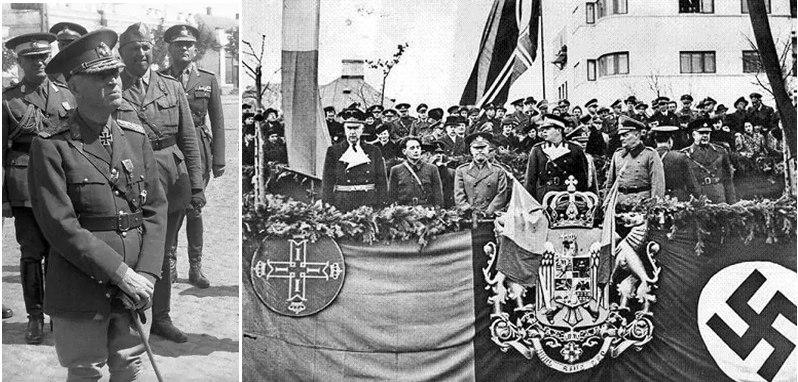
Head of the Romanian Government Ion Antonescu in Tiraspol and Odessa
How wide a range did the Romanian invaders think of “their” governorship? The Romanian counterpart of Hitler, Ion Antonescu, spoke of the terms of the status of military occupation: "act as if the power of Romania has been established on this territory for two million years." At the same time, he warned that “now he cannot make any political statement regarding Transnistria.”
“Firstly, because the Germans still retain the status of “military occupation” and have not yet officially announced the inclusion of any part of Soviet territory in the Reich; secondly, it is very difficult to know how far the Transnistria extends, "in other words, how not to miscalculate, having previously set the boundaries of this area ...", Antonescu declared in December 1941.
Thus, the plans of aggressive Romanian expansionism were not limited to the territories of the left bank of the Dniester. And the term “Transnistria” implied precisely the lands “behind” the Dniester, many times larger in size and lying much further to the east (which was even “difficult to know”) than the lands lying “near” the Dniester, which in modern times including the lands of Pridnestrovie - the Pridnestrovian Moldavian Republic.
Who Invented Transnistria?
In 1915, a journalist of Bessarabian descent, Alexis Nour, a firm believer of Romania entry into the war (World War I) on the German side, first formulated Romanian claims in the territory beyond the Dniester - Transnistria. Nour reflected his ideas in the article “Russian-Romanian Alsace-Lorraine”, in which he urged the Romanians to “know” Bessarabia and Transdniestria.
Nour also developed and published an ethnographic map of Bessarabia in Bucharest. The majority (2 out of 3 million) of the region population were Romanians - with the notation that their “local name” is Moldavians. Romanian researcher I. Konstantin explicitly mentions that, in addition to Bessarabia, the map of Nour claimed to be “Transnistrian Romanians”, and that it was Nour who introduced the term “Transnistria” and the derived adjective “Transdniestrians” into the political vocabulary, stating that there are more than a million "Transnistrian Romanians." It is unnecessary to remind that in the first quarter of the 20th century a mixed population lived on the left bank of the Dniester, that there were no Romanians here at all, but there were Moldovans, who made up less than 30% of the total population.
However, knowledge of facts has never been a strong point of radicals, racists and geopolitical crooks. As the researchers noted, the emergence of the “Transnistria” discourse contributed to the growth of interest on this territory in Romania and the subsequent formulation of the Romanian expansionist program in the east.
Thus, Alexis Nour is the author of an alien and fictional construct called “Transnistria”. The history truly repeats itself: the nationalist Romanian intelligentsia from Bessarabia at the beginning of the 20th century was the nationalist Romanian intelligentsia of Bessarabia at its end.
The Moldovan historian Izyaslav Levit speaks of such an intelligentsia: “The statement of the problem of ethnic cleansing and the creation of a homogeneous state is closely connected with the penetration and development of racist ideology in Romanian society.”
Attempt to erase the History
Lecturer at the University of Oxford Faculty of History M. Turda in his article “Race, Eugenics, and Nationalism in Romania of the 40s of the XX Century” notes that the ideas regarding the creation of an ethnically homogeneous state that arose among the nationalist Romanian intelligentsia at the beginning of the century merged in the 40s with racist nationalism of I. Antonescu and other Romanian politicians. During these years, Romanian theorists of racism, in their discussions about the survival and purity of the Romanian ethnos, emphasized the need to eliminate all communication with the lower races, to which Jews and Roma belonged. That is why at a meeting of the Romanian government on February 26, 1942, Ion Antonescu said: "It is no secret that I am not inclined to let something I have acquired slip through my fingers: Transnistria will become Romanian territory, we will make it Romanian and evict the entire foreign population from there."
However, numerous eyewitness accounts of the events of those years and archival documents indicate that not all the population was evicted from the territory of the governorship. In most cases, everything had happened differently. Terribly differently.
“Forgotten Cemetery” - as Julius Fischer calls “Transnistria” in his work on the Holocaust of that period. According to the results of his research, during the entire period of occupation on the territory of “Transnistria”, about 200 thousand Romanian and Soviet Jews died as a result of mass elimination by the Romanian administration (mainly executions and burning). The rest of the non-Romanian population of the governorship was subjected to force Romanization.
Here is what L. Sinitsyn, Candidate of Historical Sciences, writes about this in his article “Transnistria Governorship: Romanian Occupation of the Regions of Ukraine”:
“Learning the Romanian language was compulsory in all educational institutions. “Romanian language lessons” were published in a children's magazine. The occupation institutions refused to speak Russian and Ukrainian with the visitors. There was Romanization of children carried out in orphanages ... Another aspect of Romanization was the rewriting of history. The occupation authorities sought to prove the Romanian historical affiliation of the occupied territories since at least the 6th century. At Odessa University, professors from Romania, A. Boldur and S. Mehedinc lectured, arguing "Transnistria is a native Romanian land." The Romanian People’s University, which functioned from autumn 1942 to February 1943, set "to prove the historical fate of Transnistria" and "the justice of war with the Soviet Union" as its goal.
Ominous and misanthropic - these are epithets worthy of the symbolism that, with all its unconditionally, appeared in Odessa in 2017 in a find made by restoration architects during the corresponding work in the building of the palace of Prince Vorontsov. Fragments of a granite tombstone from a Jewish grave were found in the foundation of the building, on which the inscription “Transnistrian Government Building” is read.
It is well known that during the period of occupation from 1942, after renovation, and until the spring of 1944, the Vorontsov Palace during the German-Romanian occupation of Odessa was used as the residence of the governor and as the administrative building of the Transnistrian Government. The secondary use of Jewish tombstones by the occupation authorities is also known in Pridnestrovie. In the village of Rashkov, an old gravestone is now known, apparently taken from the Jewish cemetery, where the Romanian language was written on the back, where the words "Transnistria" and "Antonescu" were mentioned. To put “their own meaning” on someone else’s cultural layer and thereby rewrite history is the main message of such barbarism.
So it turns out that the “Forgotten Cemetery” by Julius Fisher is by no means a metaphor!
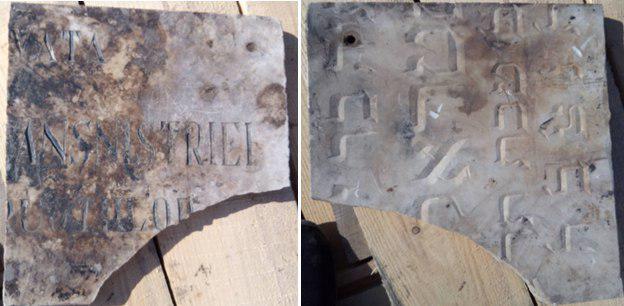
Pridnestrovie Remembers
That is why in the beginning of the 90s of the last century the people of the Pridnestrovian Moldavian Republic with weapons in their hands, at the cost of hundreds of victims, did not allow the newly-born “descendants of Antonescu” to turn our land into another “Transnistria.”
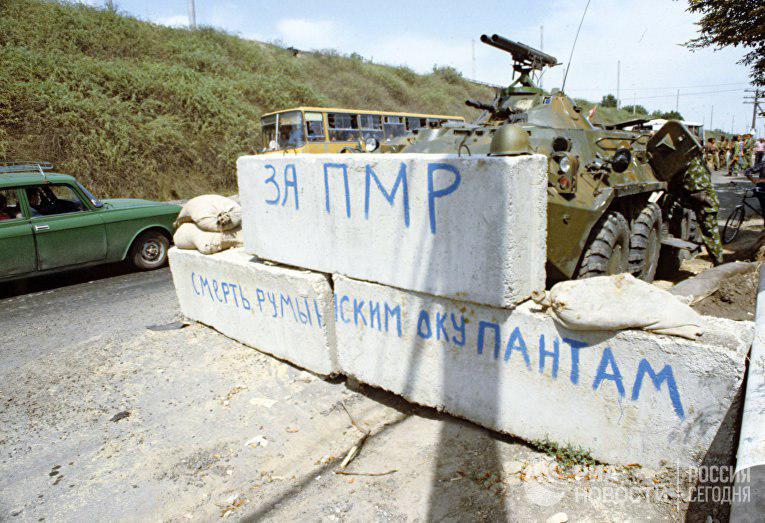
The people who still remember how these “descendants”, having turned to God for help, declared on August 27, 1991 in the “Declaration of Independence of the Republic of Moldova” to the entire world community that “Transdniestria” was an integral part of the historical and the ethnic territory of our people”, referring to the territory of modern PMR.
And the PMR President V.N. Krasnoselsky, on the eve of Victory Day, said in an interview with TSV for a good reason: “Transnistria is an exclusively Romanian occupational name. Under this "sign" there were mass executions. Not only the executions of Jews, like the Holocaust, but also the executions of civilians.” Indeed, exactly the same executions of the Pridnestrovian civilian population took place in the "bloody 90s."
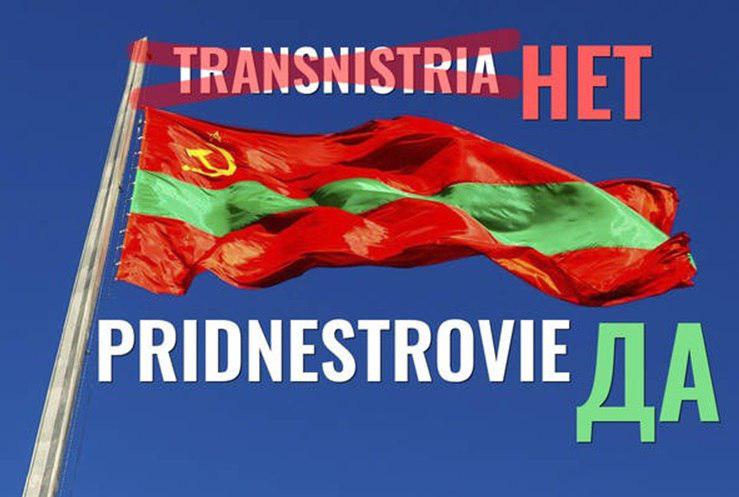
How can one forget about it when until now “on the official portal of the Romanian embassy in the Republic of Moldova in Chisinau, in the section on the Republic of Moldova, the entire population on the right bank, and the left bank of the Dniester is referred to as Romanians - “români moldoveni”. “A new nation?” - the Moldavian Vedomosti are wondering. By the way, on the same resource in the column "Transnistria" (!?) the total population is noted - 178 156 of români moldoveni.

“For me personally, as a person and a patriot who respects his history and his memory, “Transnistria” is the Holocaust, fascism and Nazism. For me it is categorically unacceptable. When I talk with my colleagues, Western diplomats, I always ask not to call us "Transnistria." Get used to it. There is a "Transdniestria," with a "d." The meaning is changing with just one letter. Or ask them to say "Pridnestrovie" in English. Let them get used to our name,” the PMR President concluded.
What is the Proper Term?
By the way, about the name in English. According to linguistic examination conducted by the Department of English Philology, Faculty of Philology, T. G. Shevchenko PSU, “from a linguistic point of view, the Pridnestrovian Moldavian Republic can be translated as the Transdniestrian Moldavian Republic as well as the Pridnestrovian Moldavian Republic”.
Moreover, the names “Pridnestrovie” and “Transnistria” (“Transdniestria”) were in competition with each other in the 1920s of the last century. And, not the territory of the left bank of the Dniester, but just Bessarabia was called “Transdniestria”.
Thus, in the Report on the need to create the Moldavian Autonomous SSR of February 5, 1924 it was said:
“The united Pridnestrovie and Transdniestria (according to the authors - Bessarabia) would serve as a strategic wedge of the USSR in relation to both the Balkans and Central Europe.”
It’s all because the concept of “Transdniestria -Transnistria” is relative and depends on which side of the Dniester is viewed: if from the side of Romania, then this is the left bank (as expressed in the corresponding name of the governorship during the occupation of Pridnestrovie in 1941-44), and if on the eastern side, the Transdniestria -Transnistria is exactly the current Moldova.
It is also important that the authors of the 1924 Memorandum separate Pridnestrovie and Bessarabia ("Transdniestria"), only offering to unite the two regions exclusively for political purposes.
Therefore, the proper term is "Pridnestrovie" but no "Transnistria!” As the historian Petr Shornikov noted, “calling Pridnestrovie “Transnistria” is scientifically incorrect and insulting in political terms in any language.”
Dismantle the Stereotype
The Pridnestrovians never lacked political sensitivity. That's what on December 29, 1990, a resident of Tiraspol A. Golub wrote in the article of Dniester Pravda "What does Transnistria smell like?":
“The materials of the “round table”, which discussed the idea of forming the “Transnistria” society, published in the digest of the newspaper Sovereign Moldova under the prosaic title Awakening (of course, we are talking about projecting the name of the Romanian anthem “Awake, Romanian!” the name of the organization - Author's note). Attention is drawn to the haste in its creation and the desire of the initiative committee, headed by Doctor of Physics and Mathematics, People's Deputy of the SSR of Moldova P. Soltan, to hold the first congress as soon as possible. What prompted the pundits with high-profile titles to take up such a difficult task? It turns out that they "decided to create a society that would help to consolidate, would awaken national self-consciousness in us and our brothers when things took such a turn by the grace of Tiraspol leaders who strive to tear off a piece of sovereign Moldova." (...) From the above “arguments” of the participants in the round table, it can be seen that the “Transnistria” society undertook, frankly, to awaken without sufficient factual grounds. It is simply engaged in defamation, introducing confusion to the masses. It’s too late, gentlemen, since this is an echo of a train that has irrevocably left. Given the massive propaganda attack from the media of the Soviet Socialist Republic of Moldova, we should purposefully defend the young Pridnestrovian republic, its ideals, and decisively suppress the creeps of an ideology hostile to us. (...) the inhabitants (Author's note - Pridnestrovie) do not need “Transnistria” and similar societies which smells like nationalism”.
That is why, in the words of V. N. Krasnoselsky, "we need to pay attention to these points of history." And therefore, lets “wink” with a postscript at all supporters of “Romanian toponymics” in the land of Pridnestrovie - another excerpt from an article by V. Lesnichenko in the Dniester Pravda of October 17, 1989:
“In the media, rumors are circulating about the autonomy of the Left Bank. In fact, we are talking about the Republic of Pridnestrovie (Podnestrovie), but not the Left Bank, that is, there is the possibility of joining ... and areas of the Right Bank, if only the population of these areas express such a will ... ”
It has long been time for the semantic multi-headed chimera of the term "Transnistria" to be destroyed, while its structure, like Carthage, shattered. "Transnistria" - the former and the imaginary future - must be dismantled! in the Pridnestrovian Present. Just like a plate from the Vorontsov Palace.


